I didn’t realize I’d been making these three common MTB riding mistakes for 25 years, but here's how I fixed them
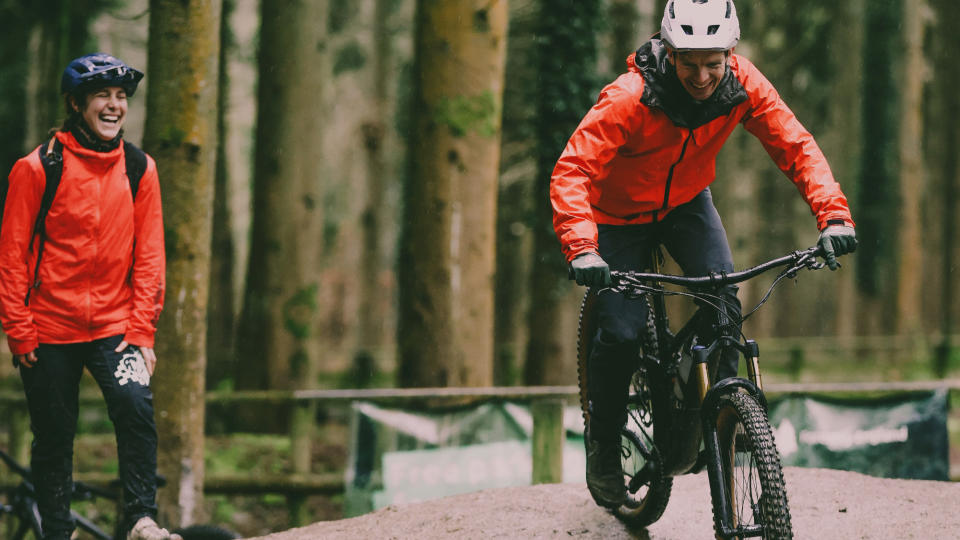
Former World Champion turned MTB coach extraordinaire, Katy Curd, laughs her head off as she tries to take a berm like I do. “I’m going to fall off,” she cries, arms rigid and body leaning the wrong way into the corner.
I’d always known that my front wheel wandered around on berms, and that at best I wafted from corner to corner, rather than flicked. Turns out I’d been riding back to front all this time, leaning with the bike instead of keeping the body upright and getting the bike over.
It wasn’t the only thing that I was doing completely wrong. Over two afternoons, Katy patiently took time on the pump track, on slabby drops, and berms and rollers, unpicked years of bad habits, my misinterpreted ideas, or just no habits, and wove new threads of technique through all of them.
This rocked my world and made me excited for the year ahead in a way that no skills sessions or watching YouTube videos have done before. These were small steps, for sure, but important ones. You might look at the photos and wonder just how bad I must have been before, but trust me, these felt like foundations that I could really build upon.
Here’s what I found out...
Katy’s coaching approach
Not surprisingly, Katy is evangelical about the value of real-life coaching compared with videos or how-to articles. Partly because some online techniques are open to misinterpretation (or just plain wrong), and partly because a talented coaching eye can troubleshoot in a way that not even the most patient buddy can.
If you tell Katy you’ll want to learn drops or jumps, she’ll warn you that she may need to take you back to fundamentals of body position and movement on the bike first… and for my riding, this was exactly what I wanted to hear.
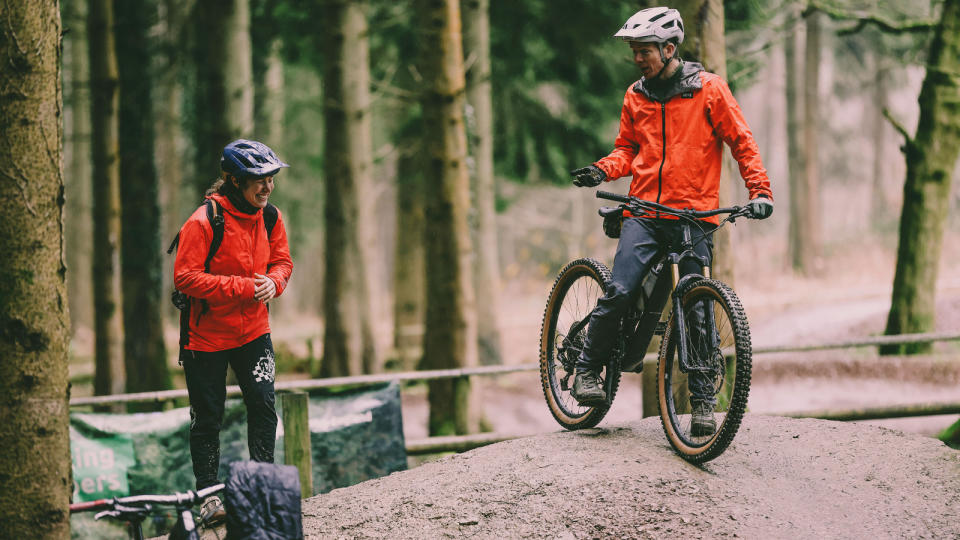
Mountain biking has been my happy place since the '90s, but I’m still a midpack XC rider with a distinct lack of flow; and a rookie trail center rider who clams up on anything that can’t be rolled over. I wanted to fix that.
I explained to Katy that I’d done a couple of jumps & drops group coaching sessions locally, and watched the usual videos, but I just ended up not knowing why things were or weren’t working.
“Really small things can block – or unlock – a technique and most riders aren’t that great at working out exactly what their bodies are doing", Katy opines. “Obviously a coach can help with that. And my view is that once you’ve got the foundations of body position and movement in place, then everything else builds on from that.”
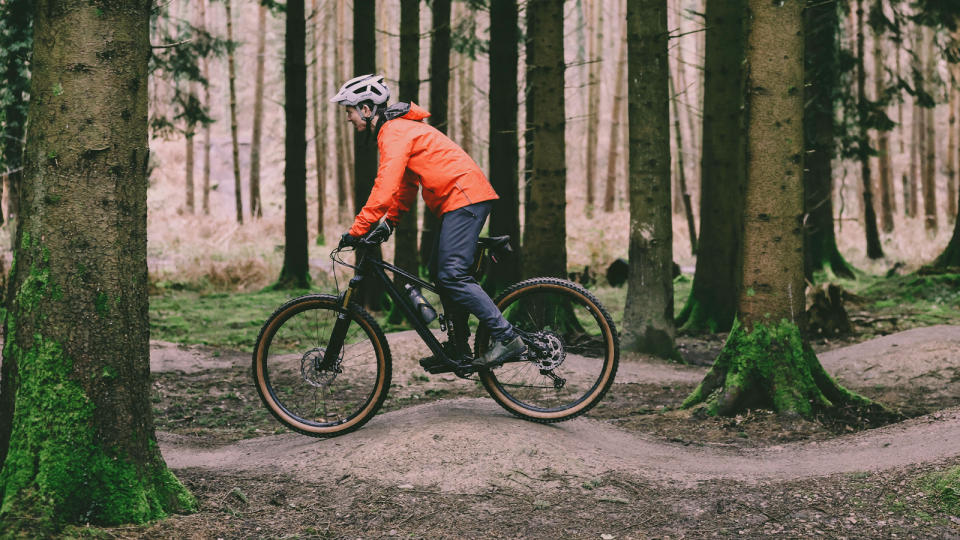
Needless to say, I was not unhappy to start small at the pump track and the skills area at the excellent Forest of Dean Cycle Centre to get some of those foundations sorted.
Here are a few of the things I discovered I’d almost literally been doing back to front. If you’ve been riding a while you might roll your eyes at the obviousness of these. But if you can’t quite put your finger on why things don’t have the flow and control you want, maybe they’ll help you too – and maybe they’ll even encourage you to seek out a coach.
Problem 1: I was leaning the wrong way on berms
There are lots of techniques in the MTB cornering toolkit, including different ones for different scenarios. But my lean-in, arms-stiff approach on berms wasn’t going to work for any scenario, and was definitely costing all my flow and speed.
I think I knew that to maximise grip and turning speed on berms, you need to lean your bike, rather than steer with your handlebars. But the crucial thing I was doing wrong was leaning my body with the bike, like a road rider. I needed to keep my body more upright, and lean the bike.
“When you decouple the bike from the body, you can keep the body’s weight over the tires and make the most of the grippy side knobs. Whereas if you lean out with your body, at some point there’s not going to be enough grip from the tires and that’s when you wipe out,” Katy explained.
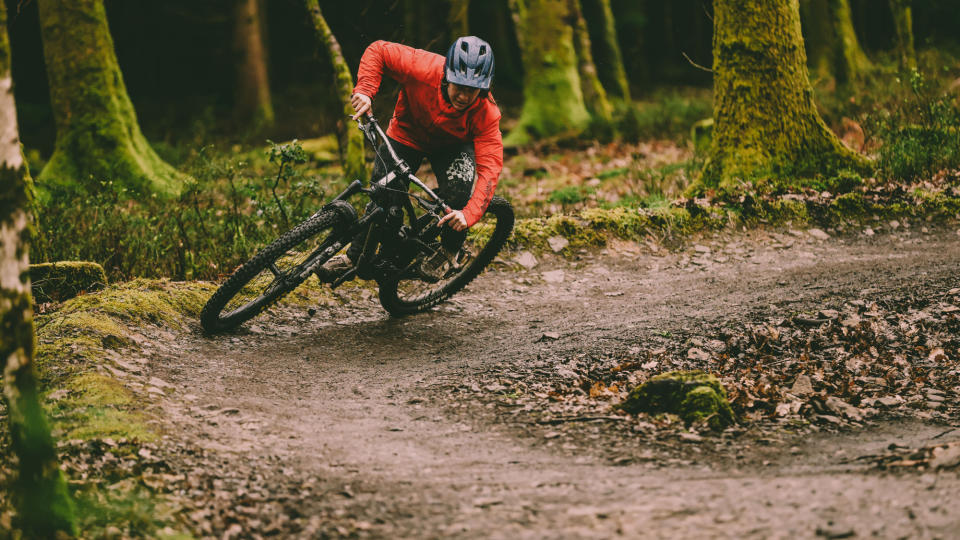
I couldn’t believe what a difference it made to the grip, and the way it also unlocked the ability to steer with the back of the bike, another one of the themes that Katy was teaching. It let me flick between berms faster – because I was mostly moving the bike, not my whole body – and also control the line better, because I had a useful amount of weight over the front of the bike.
Main takeaway: Decoupling the bike from the body unlocked grip, flow, and the ability to steer from the knees and hips
Problem 2: I was reaching away from drops, not into them
“Don’t ride drops like you’re on a '90s hardtail,” said Katy. Which was unfortunate because my limited skills peaked in the 1990s on a hardtail, when stems were long and super-low, and seatposts were high and rigid, so you had little choice but to stretch out and get over the back wheel if you didn't want to get pitched over the bars on the steep stuff.
“Your natural reaction when you come to a drop is to lean back, and to get your head and shoulders high, away from the danger. That tends to mean that as you go off the lip your body just gets sucked in the direction the bike wants to go.
“But if you bend your arms and get your chest low over the cockpit, you’ve got the freedom to control the arc the bike takes through the air. That’s often by pushing the arms straight out in front at chin height, to keep the front wheel up and clear ground below; or by deliberately pushing the bars down to minimize your airtime.”
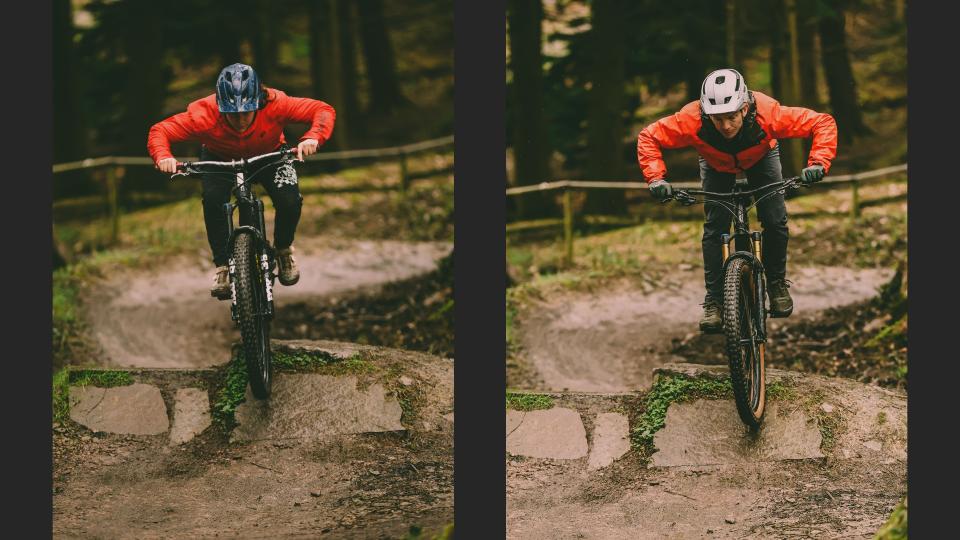
I watched the first videos Katy took of me and it was really clear – as I approached the drop, my upper body would unconsciously raise up and back, I guess out of fear that I was going to go over the bars on the drop.
One of the many great things about having a coach was trusting them. Mainly there was almost no chance of going over the bars if you had a little speed (not much was needed for the 2ft drops I was doing, as it turned out) and a little deliberate control of where the bike was going.
All of a sudden, I was on a route to unlocking foundations on the small stuff that might one day carry me through bigger stuff.
Main takeaway: Low and in control is much better than high and scared
Problem3 : I was way too passive about drops
My approach to mild drops and tech has only ever been ‘hold on and try not to screw up’ (and keep both wheels on the ground wherever possible). If I did get into the air, I thought I should just try to somehow float with the bike. ie, it was all very passive.
This might not be rocket science for you, but Katy taught me not only to use arm movement to take control of the arc of the front of the bike as it tackled the drop, but also to use a bit of a heel swing to control the direction of the back of the bike.
I was a long way from perfecting it, but I was amazed at how it started to make the drops seem smaller, smoother and more stable.
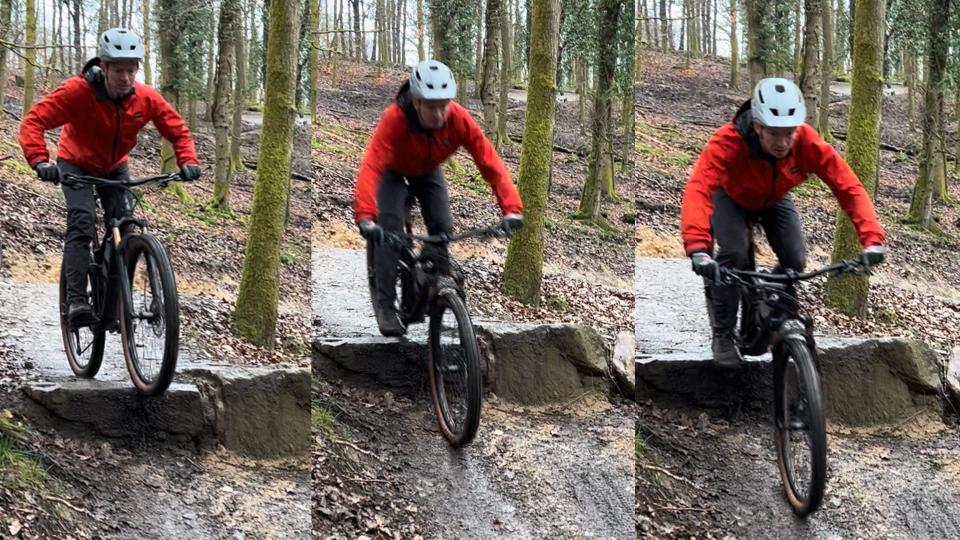
On a steep slab slope, as the bike crested the lip, pushing the bent arms down briskly brought the front wheel into reassuring contact with the slope, and pivoting the heels down brought the back wheel down deliberately too, instead of letting it continue into space. There was just a reassuring ba-dum as the front and back wheels made positive contact, and this was a style we used on smaller drops as well as slopes.
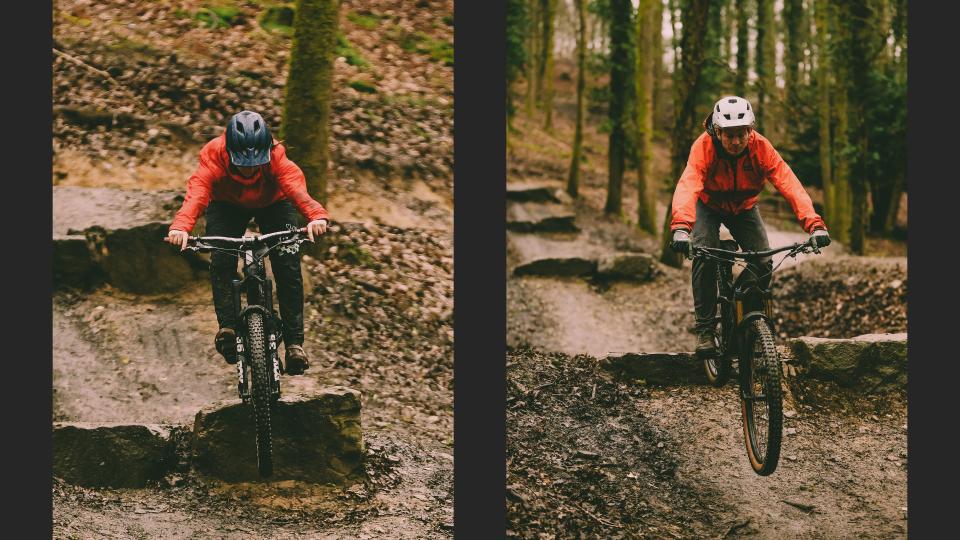
On slightly bigger drops, or if I wanted to clear a bit of distance, I would need to push forward with my arms before the front wheel left the ground, and tried to pivot the heels forward to encourage the back of the bike to follow the same line rather than dropping. The deliberate momentum of the body movements seemed almost as important as the final position itself, and gave a useful tautness to the flow of the bike through the air.
On this move, my hands were nowhere near as high as they should have been and my chest nowhere near as low, but it still made the landings feel smoother and more deliberate than I’d known before. When I lapsed into passive mode by accident, I felt much more pitched about on the landings.
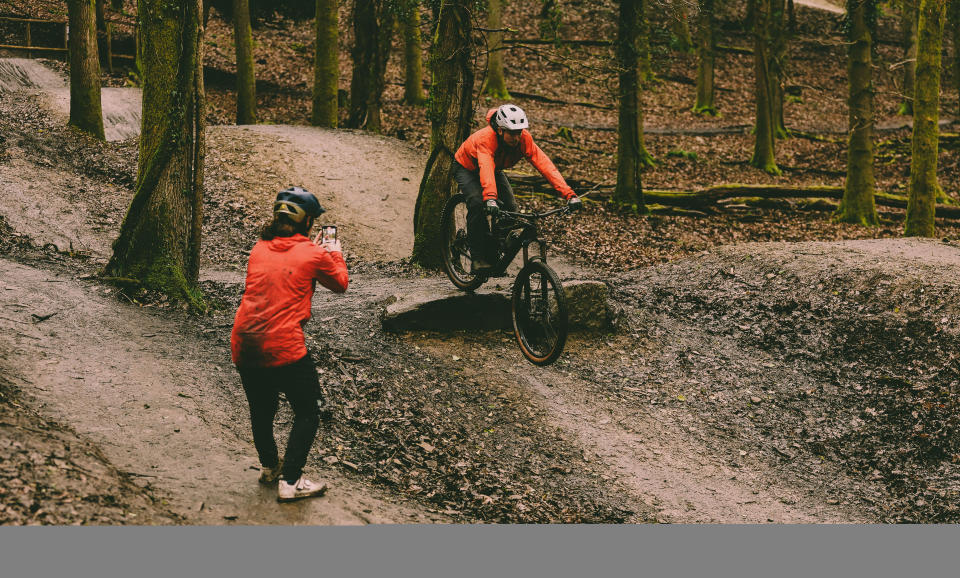
Main takeaway: When you’re in the right position, you can make a choice about the arc your bike takes
Did it transform me?
With a lot of repetition over the two days, and Katy’s talent for explaining, troubleshooting, encouraging and refining, all helped by her video recordings, I really started to notice a difference.
It was rare for all the components of a technique to come together at the same time in my practice runs – they’d flicker in and out as I remembered one thing and forgot another. But as with my sessions with a swim coach years ago, I know they could become subconscious with enough practice.
For me, one of the really neat things was actually starting to notice when I was doing something, and linking it to the effect it had. Like twisting the knee and hip out on berms, or pushing the bars out at just the right point before the front wheel went over a lip. It changed the techniques from a jumble of instructions to a set of causes and effects that I might actually remember.
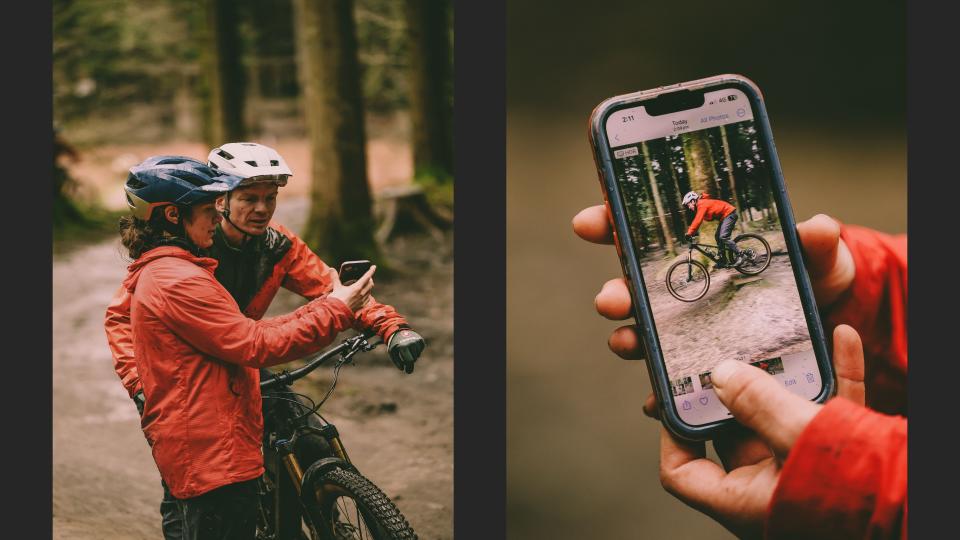
Katy Curd Coaching
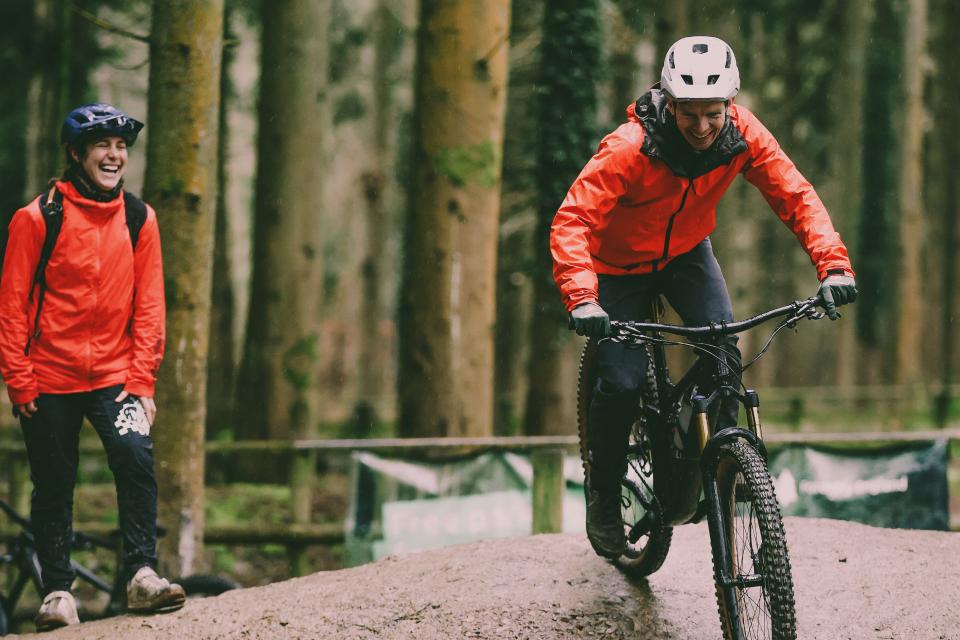
Many thanks to Katy for such great coaching. Katy Curd Coaching provides 1:1 sessions, group sessions, courses and women-only sessions in the Forest of Dean. You can find out more at www.katycurdcoaching.com
As the photos and videos show, even when everything came together, I still look like an old man going to the shops – my elbow is not scraping the ground on berms, and my chest is not two inches from the cockpit on drops, even though I was sure both of those things were the case. But I feel like something has clicked. (And I’ve already set PBs on some of my local trails since I came home.)
Finally, this totally wasn’t meant to be a ‘three tricks to transform your riding’ piece. A coach like Katy will work out what you need. But they are things that I’m going to enjoy developing. When I book another session with Katy, we’ll maybe look at some of the other 50 tweaks I could do with making.

